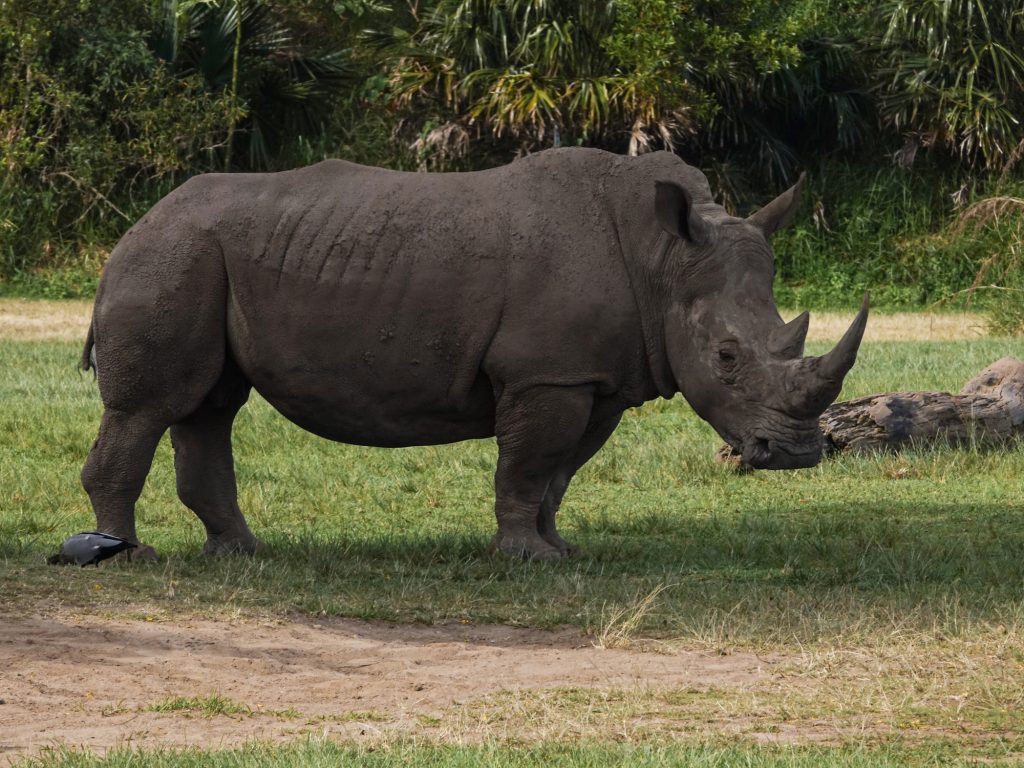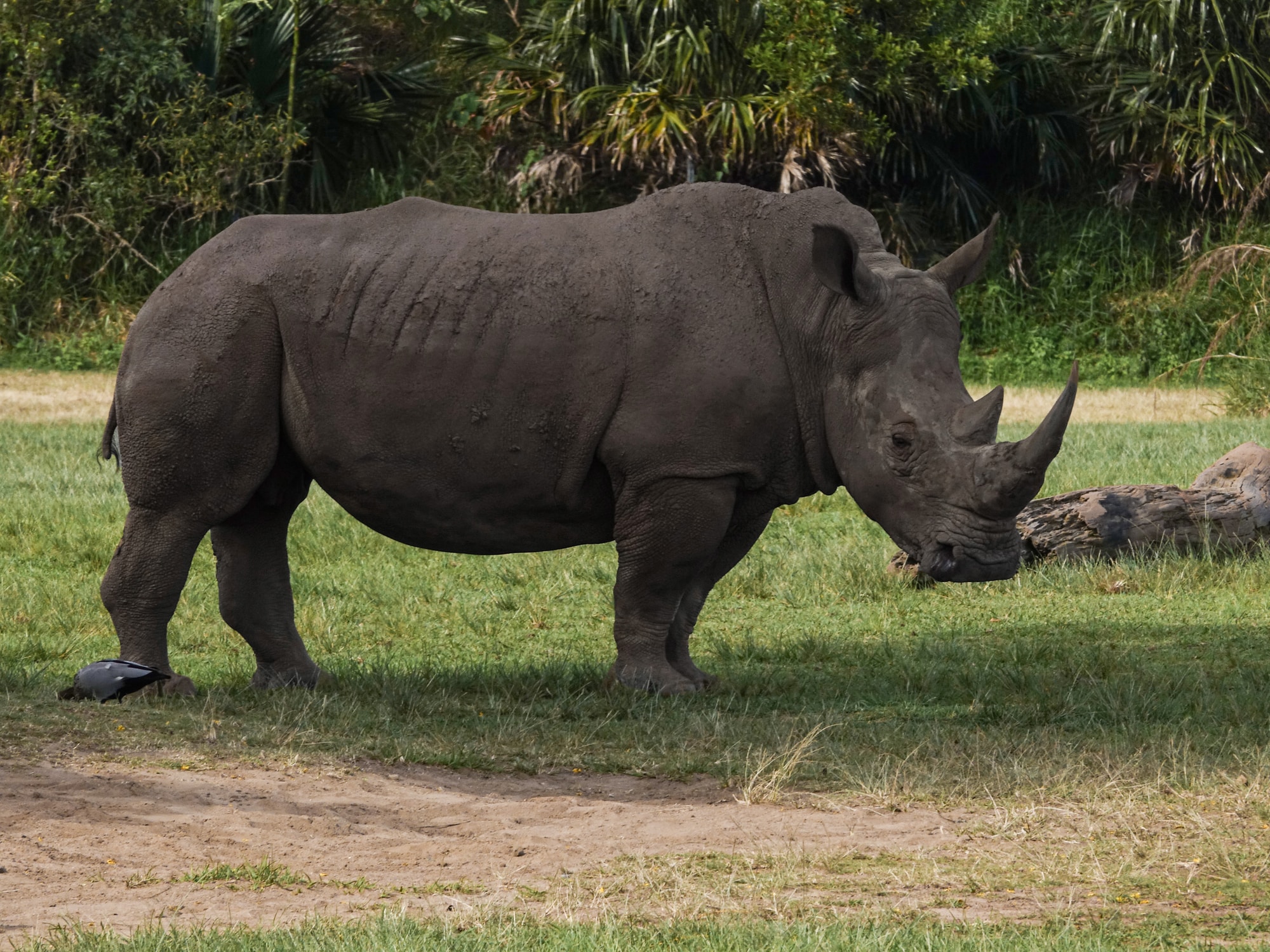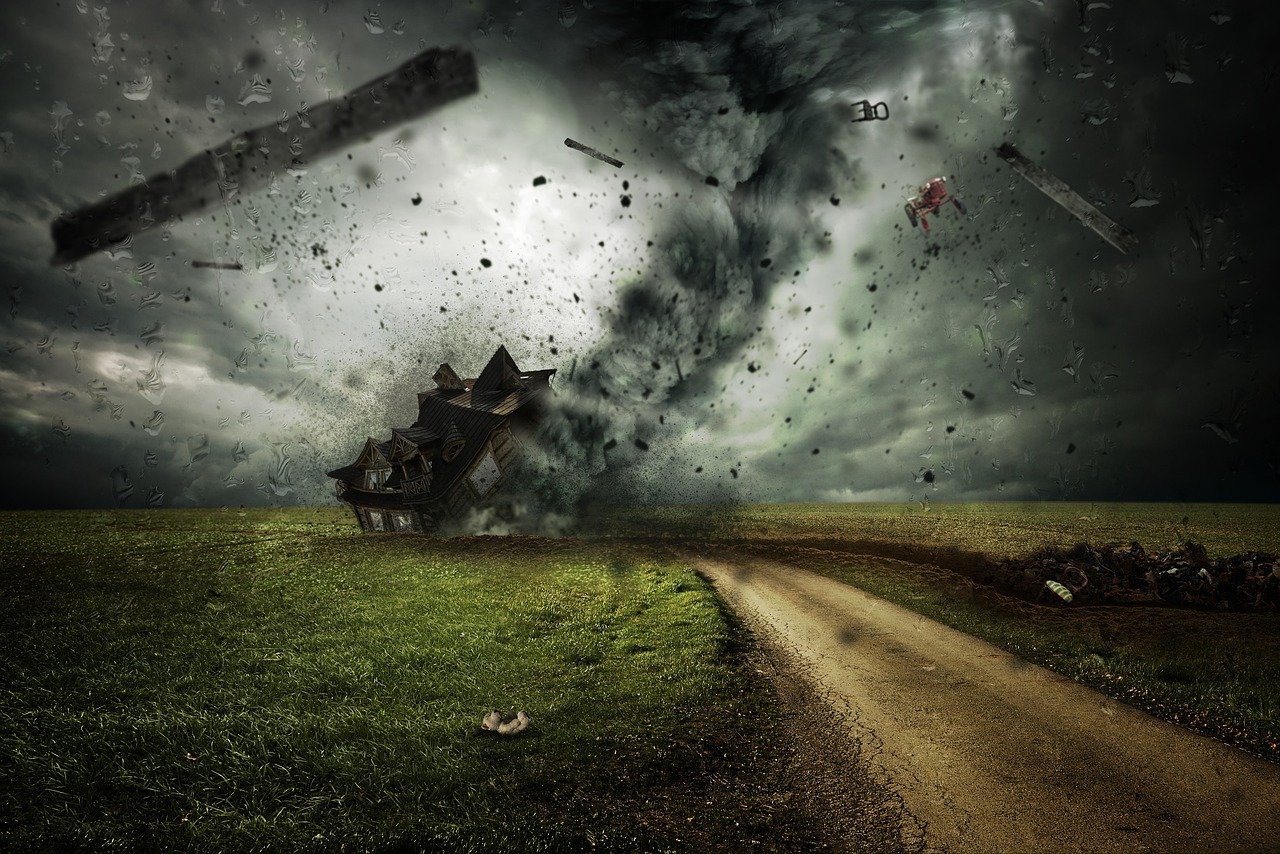The Rhino’s Horn

“There I will make the horn of David grow…” [Psalm 132:17]
Besides being a very large and strong animal, one of the most notable features about a rhinoceros is its horn (or horns). The name rhinoceros comes from two Greek words – rhino, meaning “nose,” and ceros, meaning “horn.” It is amazing that this mammal, which can weigh up to two tons and grow up to six feet tall, is a vegetarian. There are five different rhinos in the world. Two come from Africa (the black rhino and the white rhino) and three from southern Asia (the Indian rhino, the Sumatran rhino, and the Javan rhino). Rhinoceroses have very thick skin (1/2 inch to 2 inches) with folds that make them look like they have armored plating.
The best friend of a rhinoceros is the tick bird (or oxpecker). It eats ticks off the rhino, but is also a guard, making lots of noise when danger lurks close by. Rhinos are often thought of as ill-tempered, but probably have become more so in areas where they are constantly being disturbed. They do have poor eyesight but excellent hearing. When they attack, rhinos usually lower their heads, growl or grunt, and come charging at up to 30 mph, striking powerful blows with their horns – not somebody you want to get in the way of! Rhinos have only one enemy – humans. Unfortunately they have been hunted to almost near extinction. Even with strong laws, poachers still make a dent in the diminishing population because of rhinos’ valuable and sought-after horns.
Does a rhino have one horn or two? It depends. The Javan and Indian rhinos have only one horn while the white, black, and Sumatran have two. The horn is actually made up of keratin, the same material as our fingernails and hair. Some people believe the horn has medicinal value when ground into powder. Armed park rangers in South Africa try to stop poachers, who can get up to $25,000 for a horn. In 2011, up to 448 rhinos were killed for their horns.
The Bible refers to horns in many different ways. In prophecy, horns stood for kings, kingdoms, or other powers. One such horn will play a role in the time of the end before Christ comes. That horn will be destructive. Daniel writes, “I was considering the horns, and there was another horn, a little one, coming up among them, before whom three of the first horns were plucked out by the roots. And there, in this horn, were eyes like the eyes of a man, and a mouth speaking pompous words” (Daniel 7:8).






